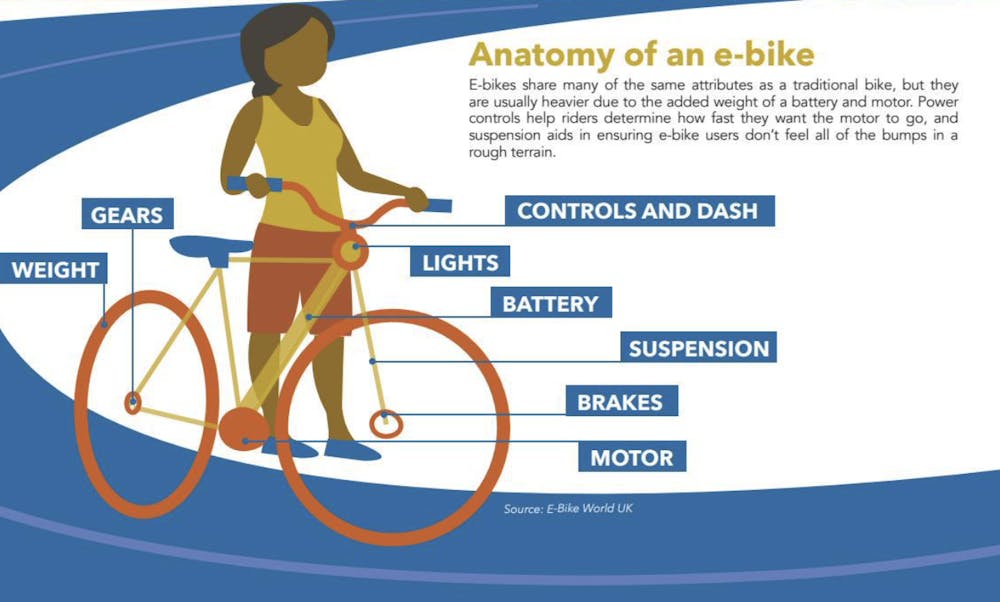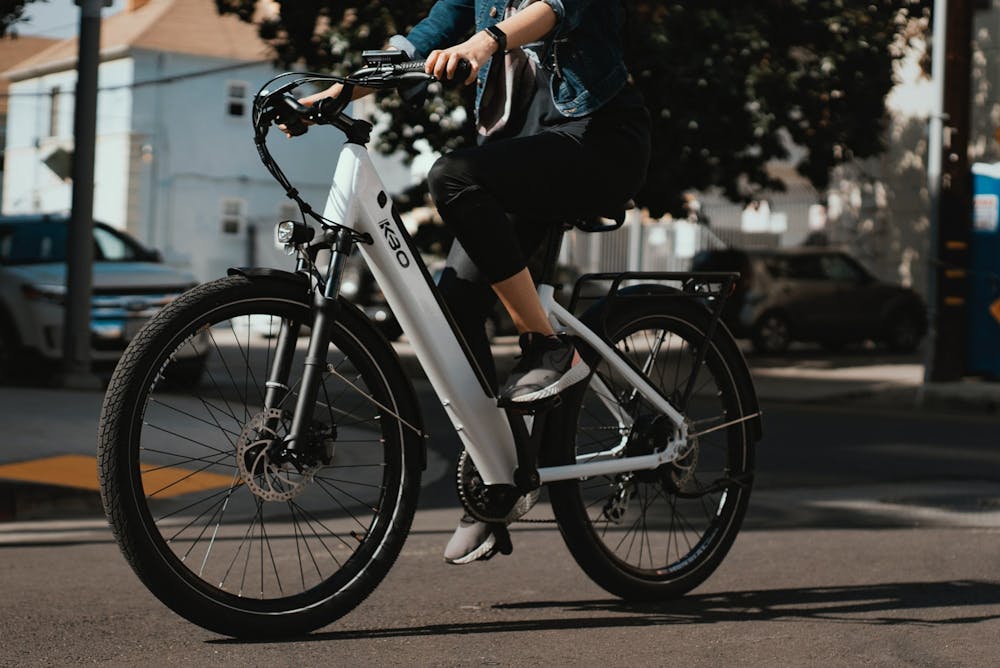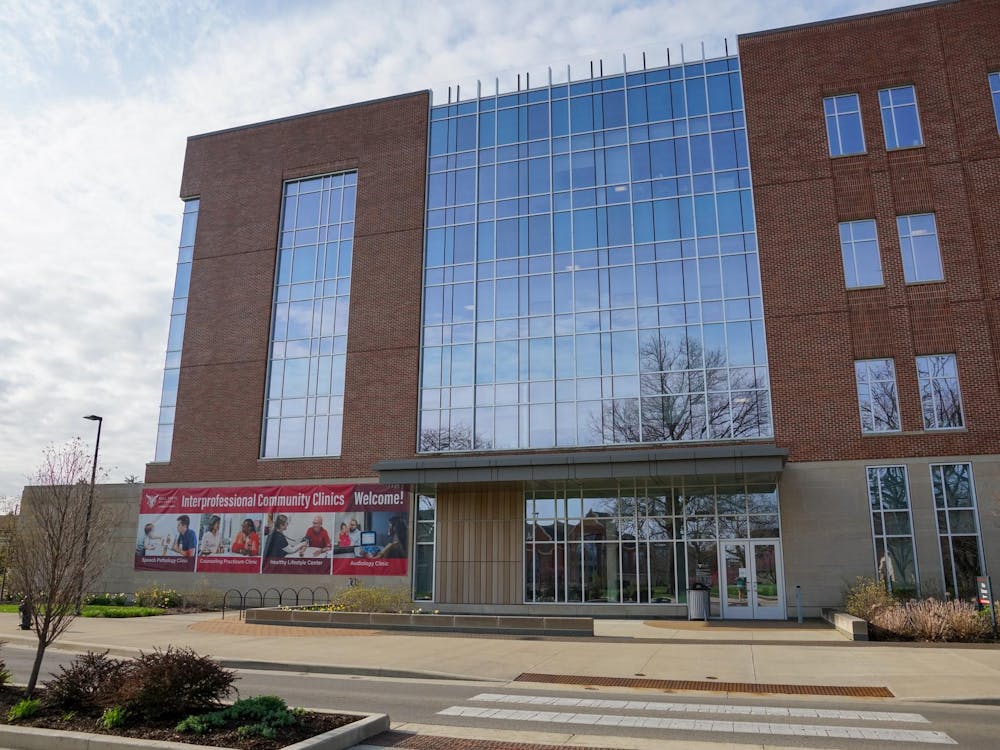Create an exercise routine at Ball State’s Human Performance Lab
The adult physical fitness program is available to anyone in Muncie and allows volunteers to come into the lab for fitness and health assessments. After analyzing the attendee’s fitness goals and what types of exercise are best for their body type, lab staff will prescribe an individualized exercise routine.
Program participants can come back to the human performance lab as frequently as they want for additional fitness assessments to monitor their progress. The operating hours of the lab are 6–8:30 a.m., 11:30 a.m.–1:15 p.m. and 3:30–6 p.m. Monday–Friday.
The human performance lab is located in room 135 in the Student Recreation and Wellness Center, across from the climbing wall. Lab visitors can sign up for individualized training sessions focused on aerobic, resistance training or flexibility and core exercises.
Face masks are required inside the Human Performance Lab. Visitors are asked to bring their own sweat towels. The lab is designed for adults who can be classified as low or moderate risk for developing cardiovascular disease, but staff also provide services for individuals with chronic diseases.
For more information on the program, call 765-285-1140.
Source: Matt Harber, director of the clinical exercise physiology laboratory
Jim Peterman, Ball State research associate in the Fisher Institute of Health and Well-Being, said he has found cycling enjoyable ever since he started racing as a student in middle school.
"I'm not sure there was anything in particular that really caught my eye about racing, other than that it was a lot of fun,” Peterman said. “I do remember that my first race was really painful but still a lot of fun."
Peterman was introduced to competitive cycling in middle school and decided to pursue a doctorate degree in physiology at the University of Colorado Boulder to learn how to improve his performance.
While later competing at the semi-professional level as a graduate student, Peterman wanted to study how cycling could improve the physical fitness of people who weren’t used to regular exercise routines as part of his dissertation.
Peterman said he previously studied passive cycling, where a motor moves a person’s legs for them on a modified exercise bike, as well as desk cycles — stationary bikes placed under work desks to pedal in place. From 2014–15, Peterman studied electric battery-powered bikes with pedal assistance, monitoring fitness variables of 20 volunteer study participants in Boulder, Colorado. The participants used e-bikes to commute at least three days per week for a total of at least 120 minutes each week over a four-week period.
When the study began, Peterman said he and his research team only had two e-bikes, so they could only monitor two volunteers at a time before they secured more funding for an additional four bikes. The study was partially funded by the Boulder city government, local bike shops and other industry donors.
“The e-bike study was a lot of fun because it was outside, so a lot of people would call it ‘true cycling,’” Peterman said. “Certainly, one of the more fun things I did with my advisers was we had to test out a variety of e-bikes before buying them, so that was a lot of fun — trying a bunch of different ones.”
The e-bikes Peterman’s research team chose had a maximum assistance level of 20 miles per hour, so participants could only travel above that speed without the help of the e-bike motor. While Peterman said there are plenty of different brands of e-bikes in the United States now, they have gained popularity over the past 10 years.
“It’s only recently that [e-bikes] started to take off,” he said. “They really took off in Europe around 2012 or 2013. We started to see a little bit of research on them, and that’s also what motivated us to do this study — these bikes just became available and were kind of the new technology.”
Peterman said he enrolled people for the study by reaching out to Colorado businesses to post recruitment messages online and in office spaces. The study was spread out over two years to avoid cycling outside in the winter months.
All study participants voluntarily completed more than the minimum required minutes on the e-bikes and, according to the study, rode the bikes at a moderate intensity.
“Regarding intensity, we were talking about how hard the participants were working, not the bike motor,” Peterman said. “They were cycling at a moderate intensity, and it's this intensity that helped them meet the physical activity recommendations.”
While his study on e-bikes as a physically active transportation mode was published in 2016, Peterman said it has received multiple citations in other studies. A July 2021 article in the Recreational Equipment, Inc. (REI) Co-op Journal listed his research as proof e-bikes make exercising for longer periods of time easier for people.
“You can put on a bike rack, you can carry a bunch of stuff, and, because you have that motor assistance — even if you load the bike down with bags and groceries or whatnot — it doesn’t feel harder,” he said. “It makes it easier for you to be willing to ride to the store or to work.”
While Peterman said he’s seen some e-bikes around Indiana, it’s more difficult to distinguish an e-bike from a traditional bike because manufacturers now often build batteries into the frame, rather than mounting them on the back or center of the bike.
Knowing about e-bikes, Peterman said, may encourage people to become more physically active.
“The e-bike is great because it’s like riding with a tailwind,” he said. “It makes everything substantially easier, but what we showed in our study was you’re still getting exercise. You’re still raising your heart rate and getting to that zone that’s associated with health benefits.”

Maggie Getzin, DN Illustration
Matt Harber, director of the clinical exercise physiology laboratory in Ball State’s Human Performance Lab, said having e-bikes available as transportation might encourage people to make time to exercise during their commutes.
“Most people look for every excuse not to exercise, and, if you’re not used to exercising, it’s not easy,” Harber said. “A lot of times, if it’s not easy and enjoyable, people are less likely to do it. In general, we look for any option that’s going to increase a person’s compliance to exercise.”
In addition to the ease and convenience of using e-bikes, Peterman said, e-bikes can add joy to riders’ days.
“The other great thing with an e-bike is they’re just a lot of fun — it’s fun being able to go a little bit quicker than you normally would without trying quite as hard,” he said. “It’s hard not to have a smile on your face when you’re riding with a tailwind and when your entire ride is like that, it’s a lot of fun.”
Harber said e-bikes can also be helpful for people who might be overweight or who find cycling workouts difficult.
“One of the unique things about cycling is it uses a specific muscle group, so people who aren’t used to exercising can fatigue very easily while cycling because it’s very localized,” Harber said. “That in itself could be a deterrent, so that’s where an e-bike, which can provide assistance to help people exercise more, may be a good alternative.”
While evaluating study participants’ health variables including blood pressure, body composition of fat and muscle amounts and VO2 max — the maximum rate of oxygen the body can use while exercising — Peterman found total daily activity, glucose levels and VO2 max showed significant improvements after the four weeks using e-bikes. At the end of the study, Peterman said his team raffled off all six e-bikes.
“There were also a couple people who started using their traditional bike more,” Peterman said. “Boulder has a lot of different bike paths, and there were some people who participated in the study who had no idea they existed, and, once they learned about them, they realized it was sometimes easier to get around by bike than by driving. Even when they didn’t have an e-bike, they gained enough confidence to start riding a traditional bike more, so that was great to hear.”
Boulder B-cycle is a public bike sharing program in Colorado that lets people borrow and return bikes from various stations throughout the city for short periods of time. Depending on their membership, Boulder B-cycle offers customers different rental rates, and offers e-bikes at an additional cost.
Sara Michaels, marketing and business development specialist at Boulder B-cycle, said e-bikes were introduced to the fleet in March 2021 “to provide a faster and easier way to get around Boulder and the [University of Colorado] campuses.”
Since their introduction earlier this year, Michaels said e-bikes have been ridden at almost four times the rate of traditional bikes, and are generally rented for longer distances.
“With the use of an e-bike, riders will go farther [and] faster,” she said. “[They will] avoid the gas pump, parking fees, traffic headaches and it’s healthy and fun.”
To provide the most popular devices to its customers, Michaels said Boulder B-cycle hopes to upgrade to a fully electric fleet of more than 500 e-bikes and expand the business regionally.
Michaels estimated there are currently about 12 B-cycle systems throughout the U.S. that include e-bikes in their fleets.
Peterman said he will continue studying VO2 max at Ball State, specifically focusing on long-term health benefits and how higher fitness levels lower people’s risk of dying early. While he is not currently studying e-bikes, Peterman said he is pursuing opportunities to continue this specific type of study in the future.
“There’s a lot of other variables that come when you collect VO2 max, so that’s what I’m studying now at Ball State is how these other variables may predict health outcomes down the road,” he said. “That will give us a better idea of how well an e-bike intervention may impact health — not just in the immediate future, but prolonged future as well.”
Contact Grace McCormick with comments at grmccormick@bsu.edu or on Twitter @graceMc564.





